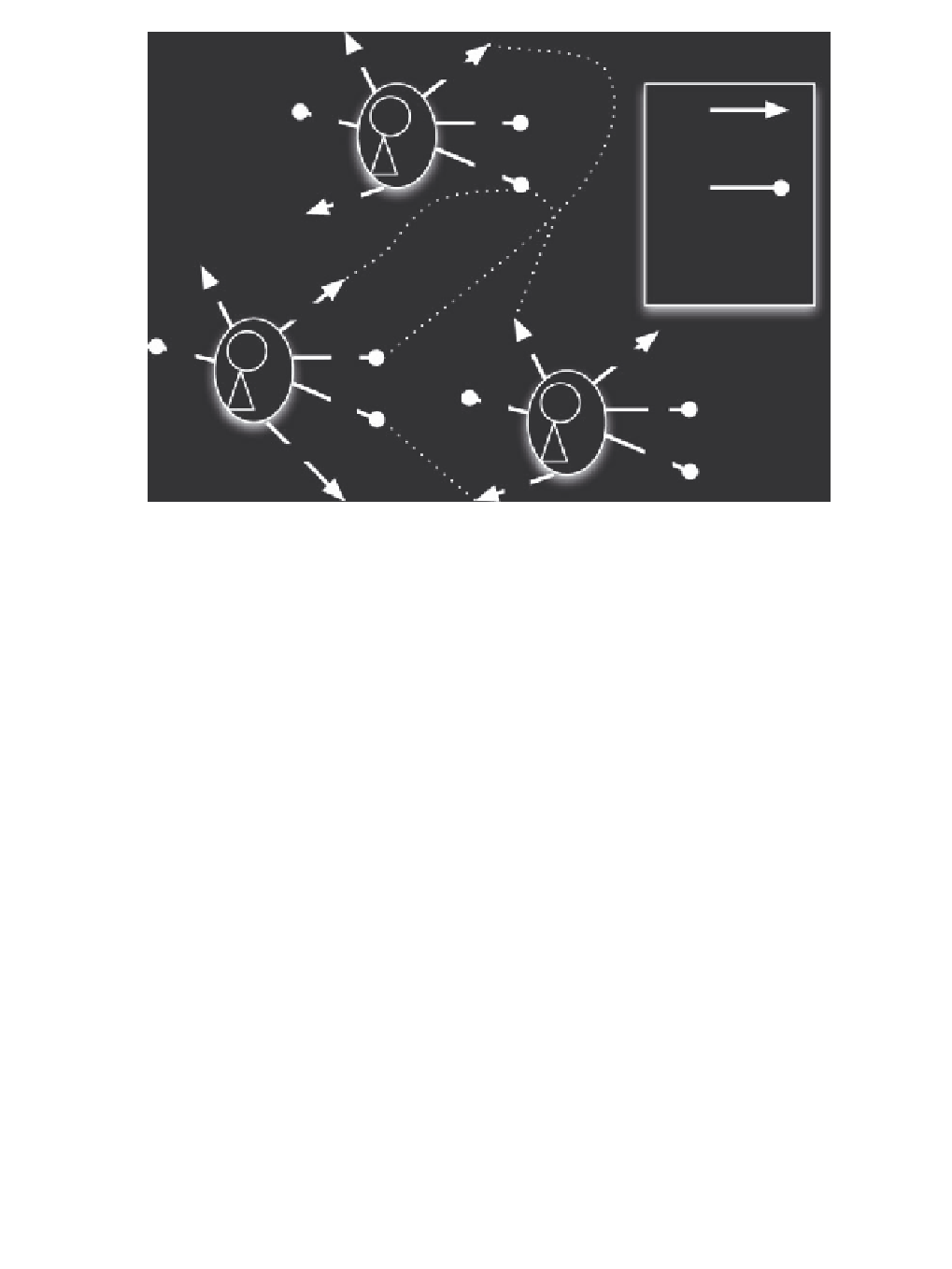Information Technology Reference
In-Depth Information
L
B
C
H
actions/plans/resources
necessary to the agent
G'
A
E
actions/plans/resources
o
wned by the agent
G, G', G''
goals of the agents
A
A
C
B
T
G
R
F
I
G''
E
B
F
Figure 10.1
Objective dependence network
able to do the needed action myself. However, as we have explained 'weak dependence' is
still 'dependence'. In fact, if
X
prefers and chooses to delegate to
Y
,this
necessarily
means
that
X
sees some advantage, some convenience; that is: she not only achieves
p
- through
Y
's
action - but also achieves some additional goal (say
q
; for example, a better quality, less costs
or effort, etc.). Thus, necessarily the reliance is about realizing
p
q
, and relatively to this real
global goal of
X
and of the delegated action,
X
is just and fully dependent on
Y
.
+
10.2.1 Objective and Subjective Dependence
The theory of dependence includes in fact two types of dependence:
(1) The
objective dependence
, which says who needs whom for what in a given society
(although perhaps it also ignores this). This dependence already has the power to establish
certain asymmetric relationships in a potential market, and it determines the actual success
or failure of the reliance and transaction (see Figure 10.1).
(2) The
subjective (believed) dependence
, which says who is believed to be needed by who.
This dependence is what determines relationships in a real market and settles on the
negotiation power; but it might be illusory and wrong, and one might rely upon unsuitable
agents, even if one could actually do the action oneself. For example, in Figures 10.2A
and 10.2B the dependence relationships as believed by
X
and
Y
respectively are shown:
they are different from the objective dependence shown in Figure 10.1, but in fact it is on
these beliefs that the agents make decisions.

Search WWH ::

Custom Search